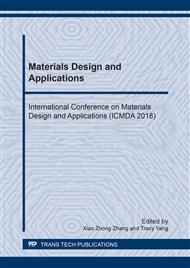p.3
p.9
p.17
p.25
p.33
p.43
p.51
p.61
Reduced Graphene Oxide/Carbon Nanotube Composites for High Electrochemical Performance Supercapacitors
Abstract:
Graphene, whose structure is composed of a single-atom-thick sheet of sp2-hybridized carbon atom, provides large specific surface area, excellent mechanical and chemical properties. In this paper, reduced graphene oxide/carbon nanotube (rGO/CNT) composite, which had superior electrochemical performance, was synthesized via a facile, handy and cheap method. Electrochemical tests showed that rGO/CNT composite that the weight ratio of graphene oxide (GO) to CNTs is 7.5 to 1 exhibited the specific capacitance was 346.84 F/g at the current density of 2 A/g in 1 M H2SO4. The good performance of rGO/CNT composite was ascribed to huge surface area of rGO and homogeneous distribution of CNT, which prevented the aggregation of rGO sheets, increased the path of electron circulation and speeded up the electrolyte penetrating into the materials. Therefore, rGO/CNT composite had great potential on supercapacitors.
Info:
Periodical:
Pages:
25-29
Citation:
Online since:
October 2018
Authors:
Price:
Сopyright:
© 2018 Trans Tech Publications Ltd. All Rights Reserved
Share:
Citation:


